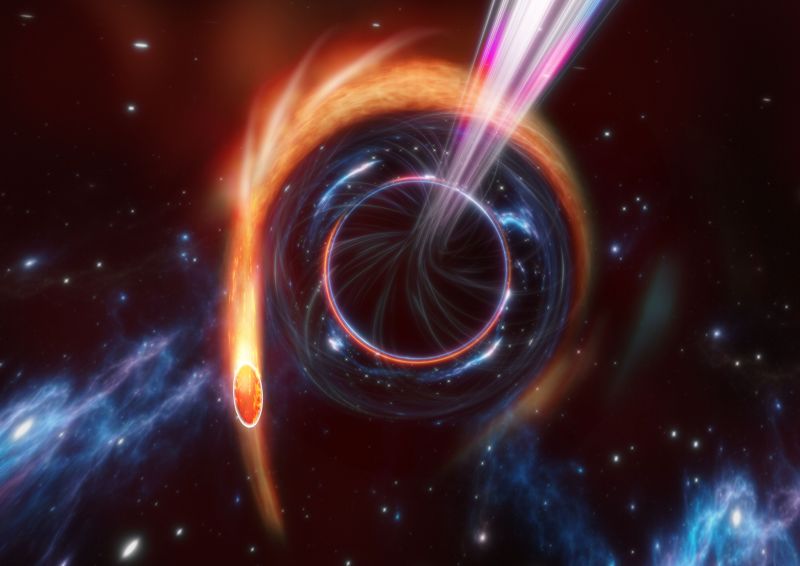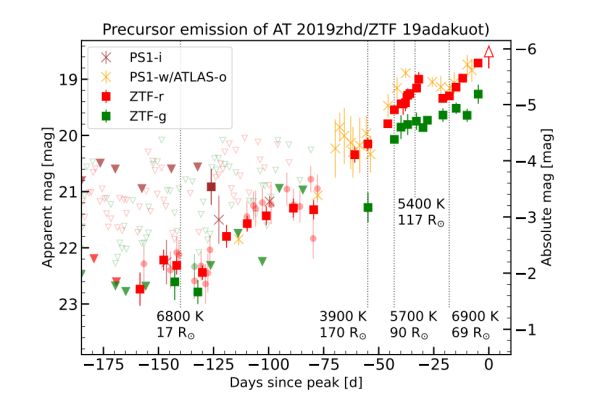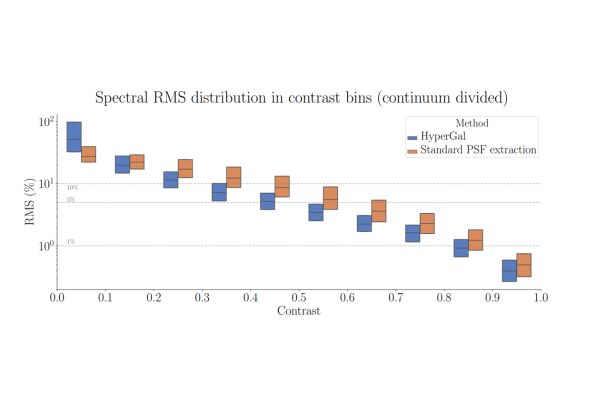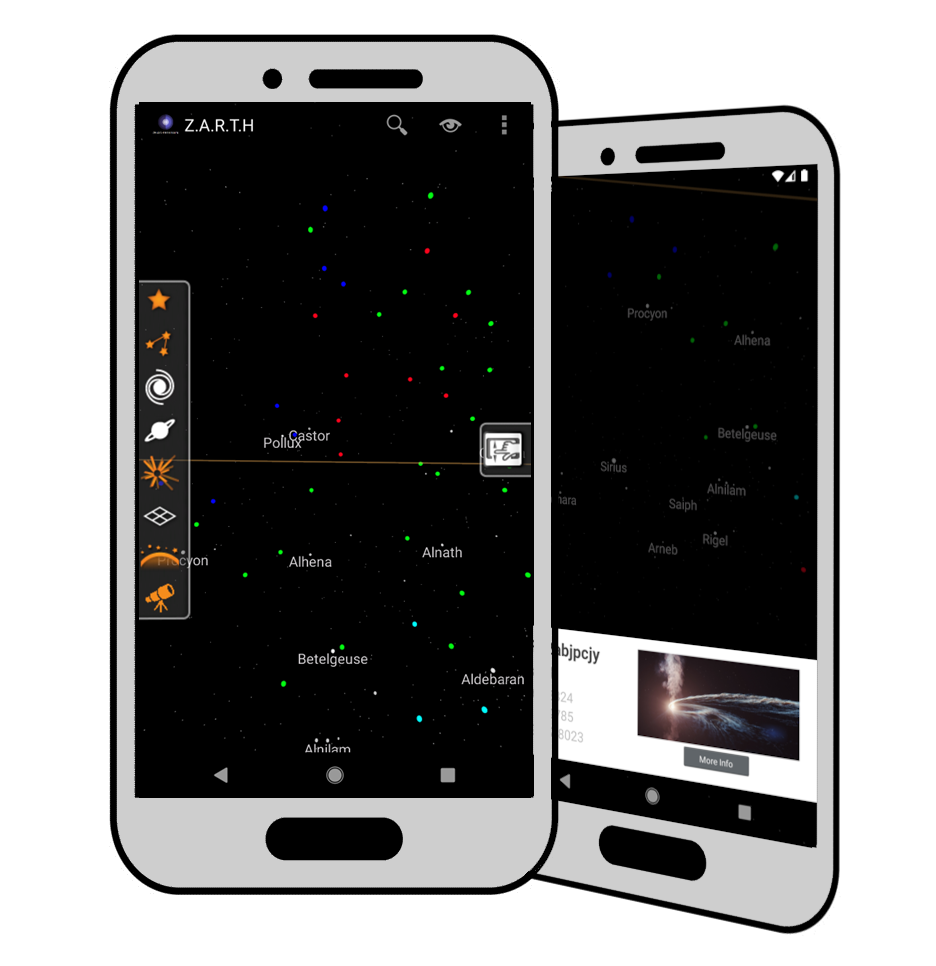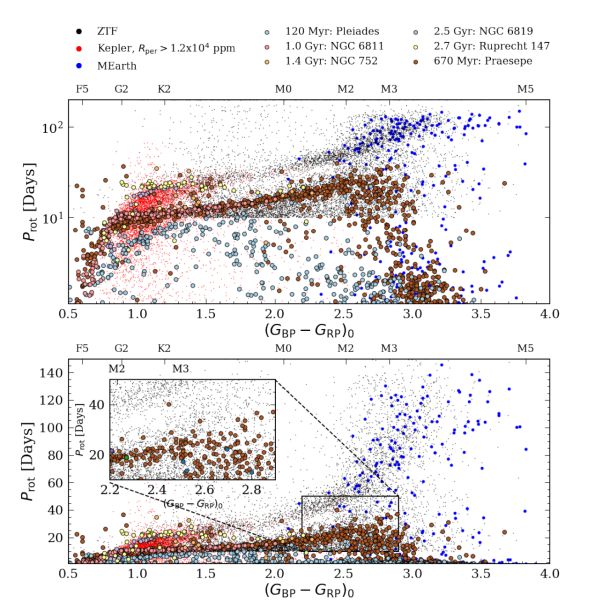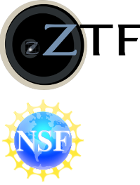ZTF Public Data Release 15
The Zwicky Transient Facility (ZTF) and IPAC at the California Institute of Technology announce the fifteenth ZTF Public Data Release. This release adds 2 months of observations to the fourteenth data release, up to 9 Nov 2022 for the public portion of the survey, and private survey time prior to 9 July 2021.
The products include 45.9 million single-exposure images, 172 thousand co-added images, accompanying source catalog files containing 728 billion source detections extracted from those images, and 4.58 billion light curves constructed from the single-exposure extractions.
Science Highlights
ZTF makes first discovery of a rare cosmic 'lunch'
Andreoni, Igor et al.; Physical Review Letters, 2022
Astronomers from the Zwicky Transient Facility collaboration have observed a truly rare cosmic “lunch” - a supermassive black hole devouring a nearby star and releasing powerful jets in the process. Dubbed AT2022cmc, this discovery was made while sieving through ZTF survey data using a novel method designed to alert astronomers for such rare events in near real-time.
Press Release1000 supernovae classified automonously by ZTF machine learning tool
Astronomers from the ZTF collaboration have developed a machine learning algorithm that now aids them in the classification of Type Ia supernovae. Dubbed SNIascore, the tool has now autonomously classified 1000 supernovae and reported them to the community for subsequent followup. In the near future, the astronomers are trying to extend SNIascore to include classifications of other supernovae. They are also adapting it to work with other spectroscopic instruments.
The circumstellar material around hydrogen-rich supernova progenitors
Astronomers from the ZTF partnership sieved through the entire Phase I survey (2018-2020) to explore early spectra of core collapse supernovae. These early spectra help to study the circumstellar material (CSM) around the massive progenitor stars. Their findings confirm that elevated mass loss in massive stars prior to SN explosion is common.
Volumetric rates of Luminous Red Novae and Intermediate Luminosity Red Transients with ZTF
In this paper, the authors use the Census of the Local Universe (CLU) program under the Zwicky Transient Facility project to present a systematic sample of 8 LRNe and 8 ILRTs. CLU is used to spectroscopically classifies ZTF transients associated with nearby galaxies (<150 Mpc). allowing tthe authors to arrive at the first systematic volumentric rates for luminous red novae and intermediate luminosity red transients.
HYPERGAL - an improved supernova classification on the SEDM spectrograph
Authors present HYPERGAL - a fully chromatic scene modeler that uses archival pre-transient photometric images of the SN environment to generate a hyperspectral model of the host galaxy. HYPERGAL is implemented on the SEDM spectrograph (part of the ZTF transient classification system on Palomar). First results show that HYPERGAL is extremely effective in extracting and classifying SNe in the presence of strong contamination by the host galaxy, providing a significant improvement with respect to the single point-source extraction.
ZTF Faces
Zach Vanderbosch
(Caltech, USA)
I'm originally from Charlotte, North Carolina and I probably started my path towards becoming an astronomer long before I even realized it.
Read OnLuke Harvey
(University College Dublin, Ireland)
I was born in High Wycombe and raised in a small village called Chinnor at the foot of the Chiltern Hills in Oxfordshire. Unlike many astronomers, I never had a telescope as a kid, nor did I show much interest in having one.
Read OnZTF Outreach
The dynamic universe in the palm of your hand
ZARTH stands for ZTF Augmented Reality Transient Hunter and it is a mobile app game designed to reveal the dynamic and transient universe to the general public. Inspired by Pokemon Go, ZARTH players can use their phones to "catch" various types of real transient candidates extracted from the ZTF survey daily and projected onto a sky map. Players earn points for each transient they catch and they can also trade some of these back in a fashion similar to a stock market. In the process, players will learn what type of transient events exist, how frequent they are and what makes some of them more valuable to astronomers.
ZARTH is still in beta mode and not released to the public. Members of the ZTF team presented the current version with a poster and demo at the 241st AAS meeting in Seattle and solicited volunteers who would like to become beta-tester for ZARTH. The ZTF team has also announced a logo competion that anyone can join and earn 100 USD gift card from the Palomar Observatory gift shop.
ZARTH website
Science with public ZTF data
We highlight scientific publications from individuals and groups outside of the ZTF partnership that use ZTF public data
The Disappearance of the Intermediate Period Gap for Fully Convective Stars, Uncovered by New ZTF Rotation Periods
Billions light curves produced by the ZTF public data service over the course of ~3 years has provided enormous opportunities for stellar astrophysicists. One recent result has used ZTF to produced the largest stellar rotation catalog for the faintest, slowest (up to 200 days) rotating dwarf stars. Using this catalog, the authors find that the intermediate period gap disappears around the fully convective boundary, providing the strongest evidence that this period gap is physically generated from interaction between a star’s radiative core and its convective envelope.
--Lucy Lu (Columbia University, USA)
'How-to' Guide
IRSA VO Table Access Protocol
IRSA offers an Application Program Interface (API) which allows access to IRSA ZTF catalog (within a script or on the command line) without the need to go through a browser. IRSA accepts three kinds of APIs for catalogs (more on IRSA's Catalog Search APIs).
This page describes IRSA's implementation of the VO Table Access Protocol, or TAP (TAP protocol document ). TAP allows a rich variety of searches, including cone, box, polygon, or all-sky. You can upload a table with multiple positions. The output can be a VO Table, an IPAC table, a FITS table, or several other formats. It also provides the option of selecting output columns, and performing functions on the results.
ZTF is supported by the National Science Foundation and a collaboration including Caltech, IPAC, the
Weizmann Institute for Science, the Oskar Klein Center at Stockholm University, the University of
Maryland, Deutsches Elektronen-Synchrotron and Humboldt University, Lawrence Livermore National
Laboratory, the TANGO Consortium of Taiwan, the University of Wisconsin at Milwaukee, Trinity College
Dublin, IN2P3, University of Warwick, Ruhr University Bochum, and Northwestern University . Operations are conducted
by COO, IPAC and University of Washington.
Any opinions, findings, and conclusions or recommendations expressed in this material are those of the
author(s) and do not necessarily reflect the views of the National Science Foundation.
